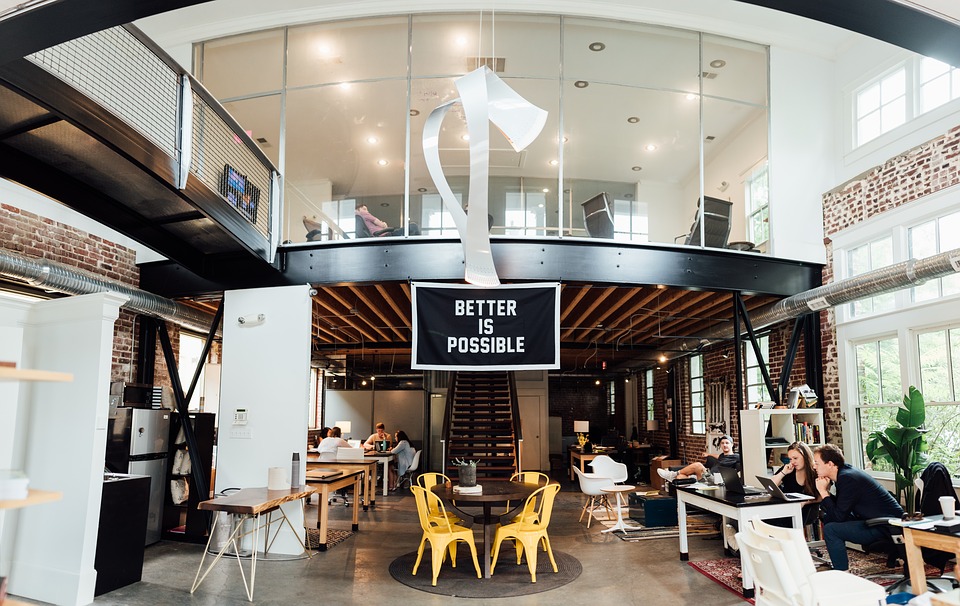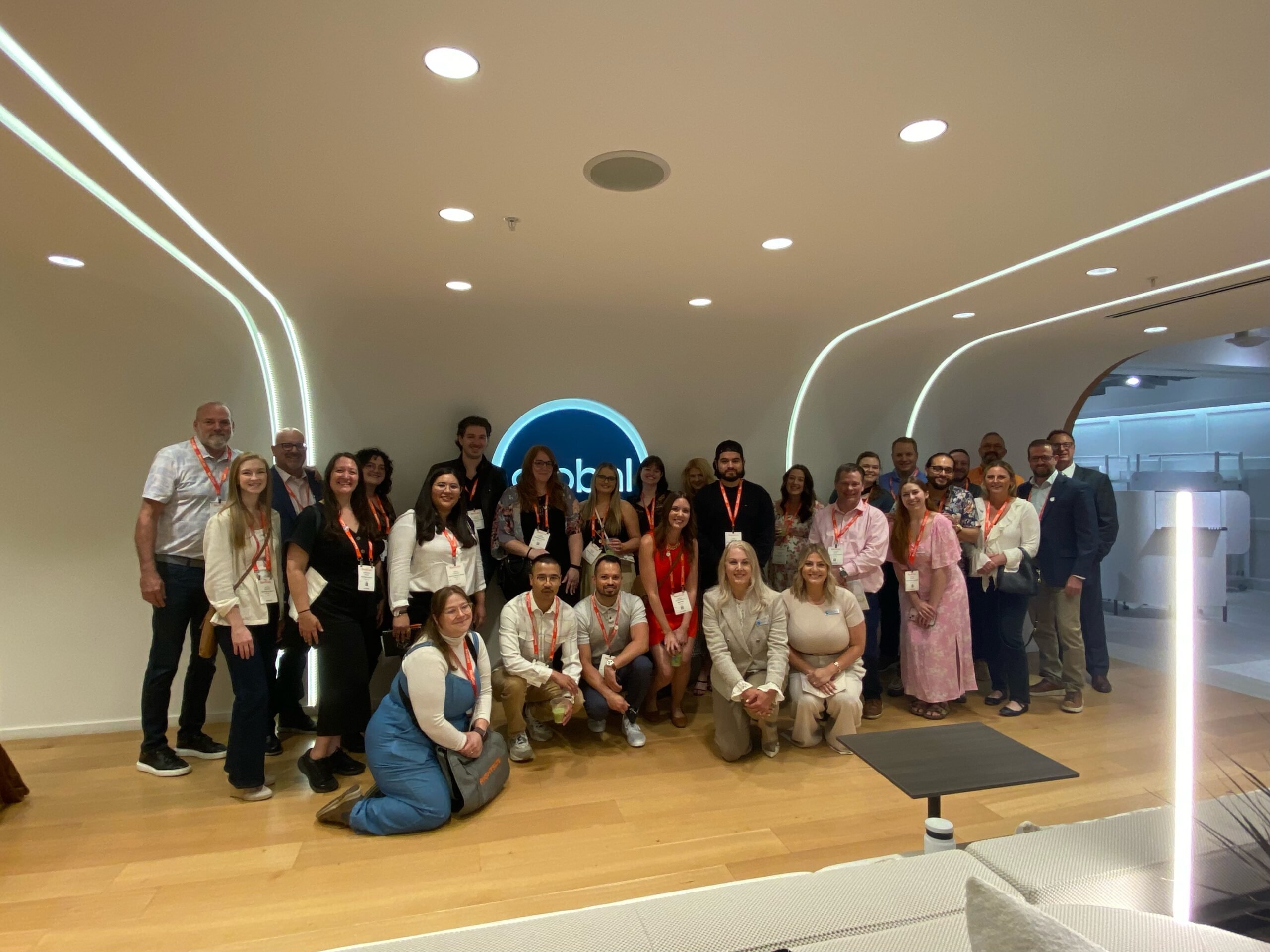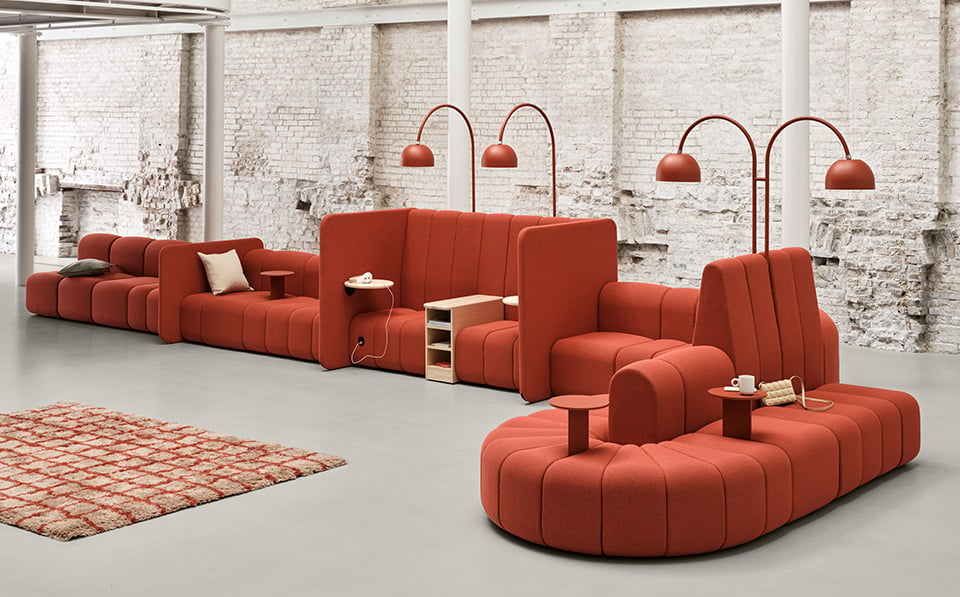Hybrid Workplace Pros & Cons
The characteristics of the ideal office plan design have changed significantly over the last few decades. First we had cubicles. Then we had open office plans. Now the question is: Are hybrid offices the new sweet spot?
The original design for the cubicle dates back to the 1960s, and its intention was to provide freedom and flexibility for the growing group of knowledge workers. By the 1980s and 1990s, cubicles were nearly ubiquitous in offices – and had transformed into a symbol of workplace tedium and unhappiness.
As a reaction, companies started tearing down cubicle walls and building open office spaces intended to create happy and collaborative workplaces. But open-plan offices brought their own set of problems, as employees battled with noise, concentration, and productivity challenges.
Now companies are trying to find the perfect balance between these two extremes: a space employees can adapt to optimize their social interaction, autonomous work, and group projects. It’s called the hybrid office, which according to Fortune Magazine, “incorporates a range of spaces and gives employees the autonomy to move between them throughout the day.”
The original design for the cubicle dates back to the 1960s, and its intention was to provide freedom and flexibility for the growing group of knowledge workers. By the 1980s and 1990s, cubicles were nearly ubiquitous in offices – and had transformed into a symbol of workplace tedium and unhappiness.
As a reaction, companies started tearing down cubicle walls and building open office spaces intended to create happy and collaborative workplaces. But open-plan offices brought their own set of problems, as employees battled with noise, concentration, and productivity challenges.
Now companies are trying to find the perfect balance between these two extremes: a space employees can adapt to optimize their social interaction, autonomous work, and group projects. It’s called the hybrid office, which according to Fortune Magazine, “incorporates a range of spaces and gives employees the autonomy to move between them throughout the day.”
What’s in a Hybrid Office?
There’s no one right way to PLAN and FURNISH a hybrid office. Its look and layout varies based on company and employee needs, but it combines diverse spaces to prioritize both freedom and privacy. A successful hybrid office has versatile areas for solo work (cubicles, private offices, soundproof rooms, phone banks) and collaboration (open-plan spaces, coffee shops, huddle rooms, lounges). Employees have some degree of control over where and how they work each day.
What are Hybrid Workplace Pros and Cons?
Hybrid offices can boost employee productivity and happiness – which leads to talent retention and overall well-being. Workers aren’t trapped in cubicles or overwhelmed by open-plan offices; they’re empowered to use different spaces based on their task, mood, or style. This can help boost production.
Another pro is the decreased cost for employers. Organizations can swap a larger office for a smaller one since there are fewer employees coming into work daily. This could help reduce rental expenses. Fewer people in the office also means organizations can reduce the number of snacks and beverages they supply for workers, helping cut costs even more.
Employers are not the only ones who can save money. Employees who follow a hybrid return-to-work model commute less, saving them money on gas and other vehicle expenses.
Hybrid offices also utilize mobile technology and cloud-based software, which can make it easier for employees to have flexible hours or work remotely. This is often a benefit, encouraging better work-life balance. But it can also blur the lines between work and personal life, setting the expectation that employees should be available at all times.
One con is that, despite having access to mobile technology, it can be difficult for employees to collaborate and connect remotely. For example, meetings where some employees are in the conference room and others are connected via video call can cause a disconnect. Those working from home might find it more difficult to share their thoughts and ideas.
Moreover, a hybrid workplace can make it difficult to maintain or form relationships with colleagues. When employees are working from home, they can’t just walk over to a colleague’s desk for a quick chat or joke. This may cause remote workers to feel isolated or left out, especially from events that take place in the office.
Another con is the potential for burnout. For example, compared to in-office workers, remote employees tend to work longer hours and take shorter breaks. Moreover, when a remote worker takes a break in the middle of the day to walk the dog or play with the children, it can make her or him feel guilty. This can cause that worker to overcompensate by working past traditional hours.
An effective hybrid office finds a happy medium between workplace flexibility and 24/7 office hours.
Get in touch with Rightsize to PLAN your ideal office space.
Another pro is the decreased cost for employers. Organizations can swap a larger office for a smaller one since there are fewer employees coming into work daily. This could help reduce rental expenses. Fewer people in the office also means organizations can reduce the number of snacks and beverages they supply for workers, helping cut costs even more.
Employers are not the only ones who can save money. Employees who follow a hybrid return-to-work model commute less, saving them money on gas and other vehicle expenses.
Hybrid offices also utilize mobile technology and cloud-based software, which can make it easier for employees to have flexible hours or work remotely. This is often a benefit, encouraging better work-life balance. But it can also blur the lines between work and personal life, setting the expectation that employees should be available at all times.
One con is that, despite having access to mobile technology, it can be difficult for employees to collaborate and connect remotely. For example, meetings where some employees are in the conference room and others are connected via video call can cause a disconnect. Those working from home might find it more difficult to share their thoughts and ideas.
Moreover, a hybrid workplace can make it difficult to maintain or form relationships with colleagues. When employees are working from home, they can’t just walk over to a colleague’s desk for a quick chat or joke. This may cause remote workers to feel isolated or left out, especially from events that take place in the office.
Another con is the potential for burnout. For example, compared to in-office workers, remote employees tend to work longer hours and take shorter breaks. Moreover, when a remote worker takes a break in the middle of the day to walk the dog or play with the children, it can make her or him feel guilty. This can cause that worker to overcompensate by working past traditional hours.
An effective hybrid office finds a happy medium between workplace flexibility and 24/7 office hours.
Get in touch with Rightsize to PLAN your ideal office space.





